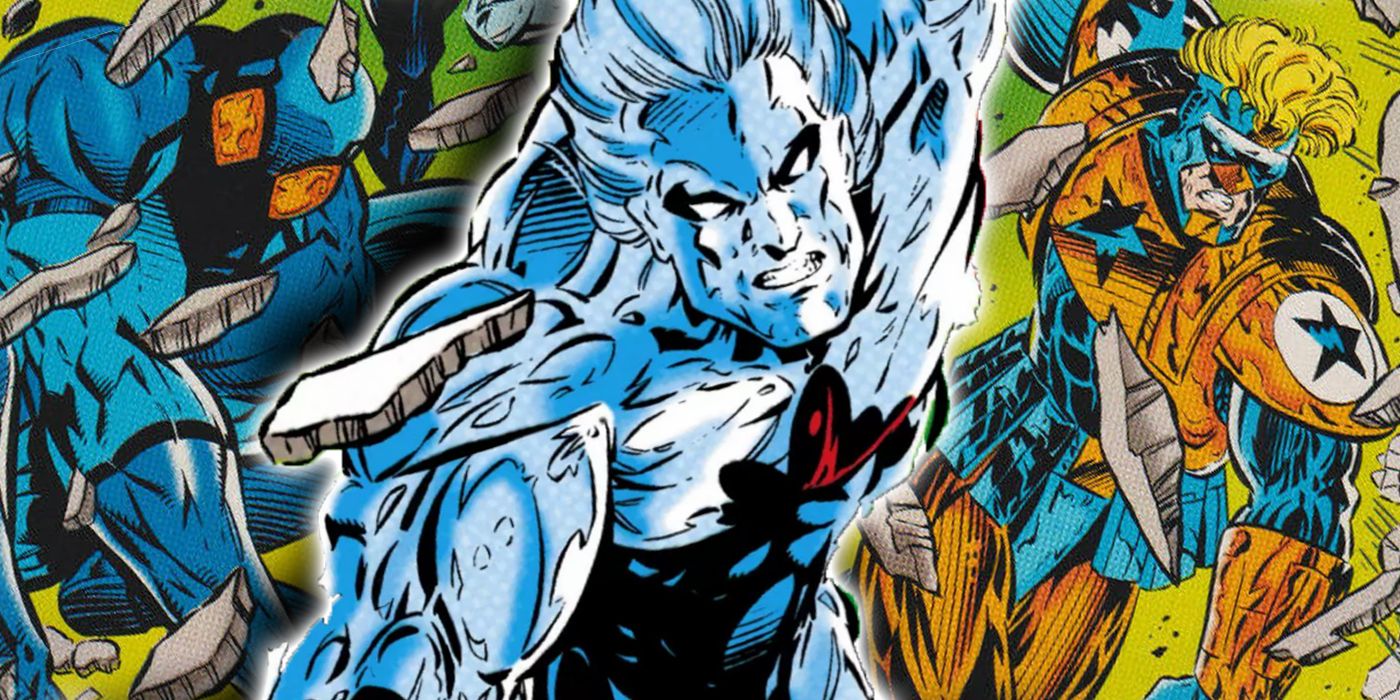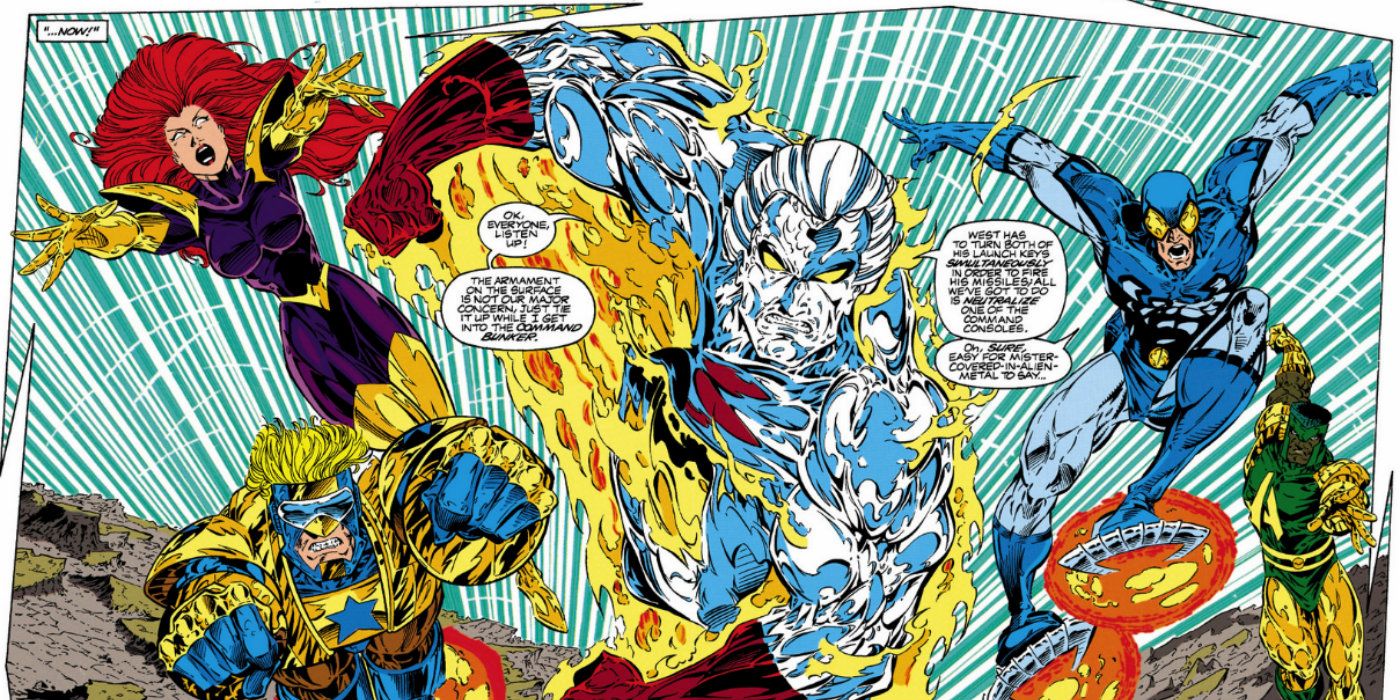The Justice League has long been DC's biggest team, featuring their biggest superheroes and facing threats that no single hero could face alone. This reputation began to dwindle, however, before and after Crisis on Infinite Earths. Temporarily made up of forgettable characters in Detroit, the team later gave way to slapstick comedy in Justice League International.
The early '90s saw the Justice League expand, with one team, in particular, following the grim and gritty trends of the era by taking heroism to its logical extreme. Made up of familiar yet different second-string heroes, Extreme Justice certainly wasn't the same team that usually featured Superman, Batman and Wonder Woman.
EXTREME JUSTICE
Extreme Justice was created by Dan Vado and Marc Campos ran from 1994 to 1996. The series replaced Justice League International/Justice League Europe, which had been the face of the Justice League for years by that point. The team didn't feature big names like Superman, Batman, Wonder Woman, The Flash or Green Lantern, though it did have Blue Beetle and Booster Gold, who had been in the previous series.
Led by Captain Atom and also featuring Maxima and Amazing Man, the Extreme Justice moniker was a very apt description for the team. They were meant to be more proactive than most superheroes, dealing with threats before they became too powerful. This came after Captain Atom had grown tired by how hamstrung the former League had become by being tied to the United Nations, with Extreme Justice (which was rarely referred to as such) splitting off from any government overseers.
Also fitting the team name was the art, which redesigned many classic characters to fit in with the growing popularity of books at Image Comics. It was one of the few DC books that attempted to ride this wave, and it was rather obvious in its methods. Scowls and gritted teeth are a constant sight, with muscles and breasts being more emphasized. Booster Gold got a ridiculous-looking armor that made him look like Valiant's X-O Manowar crossed with a football player, while Blue Beetle was rather blatantly drawn to resemble Todd McFarlane's take on Spider-Man.
The End of Extreme Justice
The team's first big mission was to stop a nuclear holocaust from taking place due to a military coup occurring at their base of Mount Thunder, Colorado. Next, they tried to recruit Firestorm to help them, but the hero's status quo at the time made this difficult. Ronnie Raymond had been seemingly depowered and diagnosed with leukemia, while Martin Stein had become a cosmic elemental Firestorm. Ronnie was eventually restored and cured of leukemia, but he and Captain Atom feuded quite a bit.
There were three different Justice Leagues at the time: Justice League America, Extreme Justice and the similarly edgy Justice League Task Force. The three teams and each of their leaders didn't have much synergy with each other, with Wonder Woman, Martian Manhunter and Captain Atom strangely being written as rivals to see whose team would succeed in the pursuit of justice the most.
Extreme Justice's final mission involved them essentially invading Libya stand-in Bialya, where a new version of the violent extremists were being formed. Extreme Justice decimated the forces of the country's leader, Queen Beatriz, only after discovering that what they thought were mere robots were actually Bialyan citizens who had volunteered to become cyborgs. This move proved incredibly unpopular, with Extreme Justice being disbanded thereafter. The other two Justice Leagues would soon do the same, with the team entering a new classic era shortly afterward when Grant Morrison and Frank Quitely launched the acclaimed JLA. Extreme Justice has since fallen into the dustbin of history, with even those who scoff at '90s excess in comics now having forgotten its story and events.



